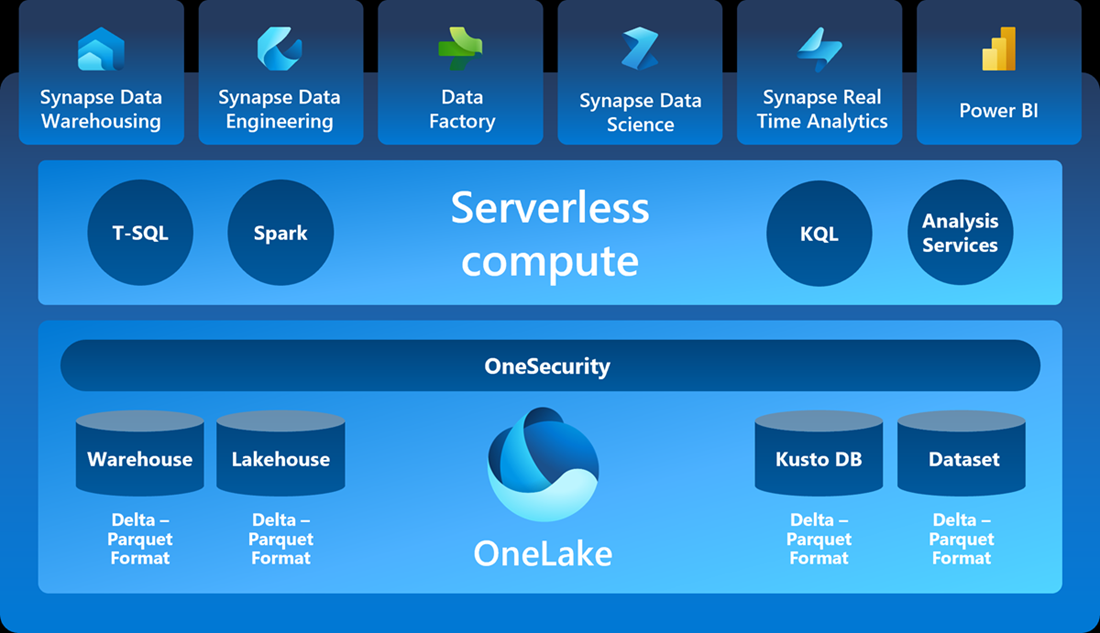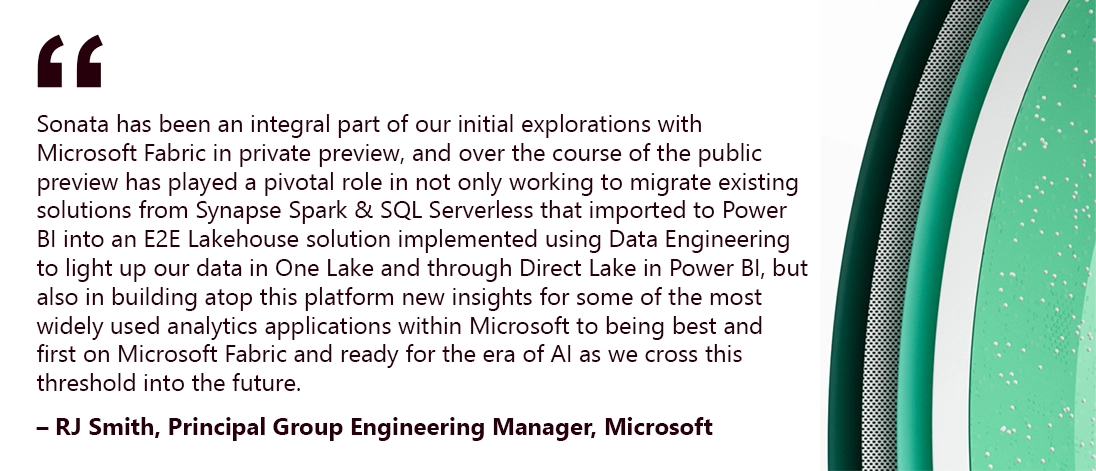Life Sciences and Consumer Health industry is witnessing a significant shift in recent years. Previously, the focus was primarily on consolidating fragmented data from disparate systems, which hindered seamless access and integration, making it challenging to derive valuable insights.
However, today, we are seeing an increasing number of pharma and med-tech enterprises realizing the importance of investing in their data to derive value out of it and unlock its true potential. Addressing this need, Microsoft Fabric emerges as a multifaceted solution to the industry's data challenges.
On April 30th, Sonata, in partnership with Microsoft, hosted a bespoke event "A Date with Microsoft Fabric" at New Jersey. The event witnessed a remarkable turnout, attracting many industry leaders from the Life Sciences and Consumer Health space.
During the event, the delegates engaged in thought-provoking discussions centered around deriving value faster from data, leveraging the Fabric Platform. Fabric offers a comprehensive suite of services, including Data Engineering, Data Factory, Data Science, Real-Time Analytics, and Data Warehouse to help organizations gain value from their data. Here’s how:
Unified Solution
Fabric integrates data movement, processing, ingestion, transformation, real-time event routing, and report building, simplifying analytics needs.
SaaS Model
Operating on a Software as a Service (SaaS) model, Fabric combines components from Power BI, Azure Synapse Analytics, Azure Data Factory, and more into a unified environment.
AI Integration
Fabric embeds AI capabilities, automating integration to transform raw data into actionable insights.
Data Lake Centralization
Fabric’s OneLake centralizes data storage, maintaining data in its original location while enabling preferred analytics tools to access it, streamlining administration and governance.
Through engaging panel discussions and business deep dives, attendees gained insights into leveraging Microsoft Fabric for transformative outcomes. Here are five key takeaways from the conference, which were the major discussion points amongst the attending leaders:
Drug Discovery and Development
The utilization of data analytics and AI can significantly accelerate the drug discovery and development process. By harnessing vast amounts of data from diverse sources, such as semantic literature searches, knowledge bases, and biomedical knowledge corpus, Microsoft Fabric empowers researchers to identify potential drug candidates with clinical viability more efficiently. The integration of AI solutions within the Fabric platform enables researchers to comb through millions of data points, dramatically reducing drug discovery time.
Supply Chain Optimization
Optimizing supply chain operations, including demand forecasting, inventory management, and distribution logistics, was another prominent topic of discussion amongst the delegates. With enterprise supply chain applications housing complex structured data in various formats and schemas, the Fabric platform provides a unified view and insights across all these disparate datasets. Control towers play a vital role in maintaining supply chain resiliency and extracting valuable insights from multiple enterprise applications, such as ERPs, WMS, TMS, and Planning and Execution systems.
Real-World Evidence (RWE) and Post-Marketing Surveillance
Data lakes can integrate real-world data from various sources, such as electronic health records, wearable devices, and social media, to generate real-world evidence on product efficiency, safety, and consumer behavior. By leveraging AI capabilities, this data can be analyzed to identify potential adverse events and opportunities for product improvements.
Comprehensive Data Governance
To address the unique data governance challenges faced by the healthcare and life sciences industry, Azure Purview and Microsoft Fabric offer a holistic data governance solution. This tailored solution enables organizations to measure outcomes from data governance, ensuring compliance and security. Microsoft Fabric also empowers organizations to govern their sensitive data effectively by enabling real-time access, analysis, and application of governance controls to maintain compliance, improve data quality, and reduce risks. The admin portal offers centralized management of the Fabric estate, allowing administrators to delegate specific aspects of administration and governance to designated scopes, ensuring efficient and secure data governance practices. In summary, Microsoft Fabric enhances data governance by providing a unified view, real-time access, and administrative control over data assets.
Concerns Around Adoption of Gen AI
In general, the adoption of AI in Life Sciences and Consumer Health encounters multifaceted challenges in quality, accessibility, and affordability of health systems, particularly in regions where there is a shortage of medical professionals. AI offers a solution to enhance healthcare access and quality. Another challenge in adopting AI is ensuring data quality and interoperability among AI models to perform effectively, as they heavily depend on accurate and consistent data. Moreover, navigating ethical and legal issues such as data sharing, privacy, and consent presents complex challenges that require a delicate balance between safeguarding patient privacy and leveraging data for valuable insights.
While leaders in the industry are eager to embrace Gen AI for improved member, patient, and provider experiences, along with increased productivity and reduced administrative costs, they also expressed concerns about its adoption during the event. It was highlighted that Gen AI is still a human-led process, and critical decisions must be carefully evaluated and monitored by professionals. Healthcare professionals may also resist adopting new technologies due to lack of training or familiarity.
Conclusion
In conclusion, Microsoft Fabric offers a powerful solution to overcome the data challenges faced by the healthcare industry. However, implementing and harnessing its full potential requires expertise and guidance. Over the past 18 months, Sonata has been collaborating closely with the Fabric team, recognizing the platform's potential to revolutionize data modernization.
If you're seeking to modernize your data infrastructure on Fabric, contact Sonata. Because, at Sonata, we provide a comprehensive solution for businesses seeking to modernize their data infrastructure on Fabric, leveraging the power of AI and automation for enhanced efficiency and effectiveness.
















